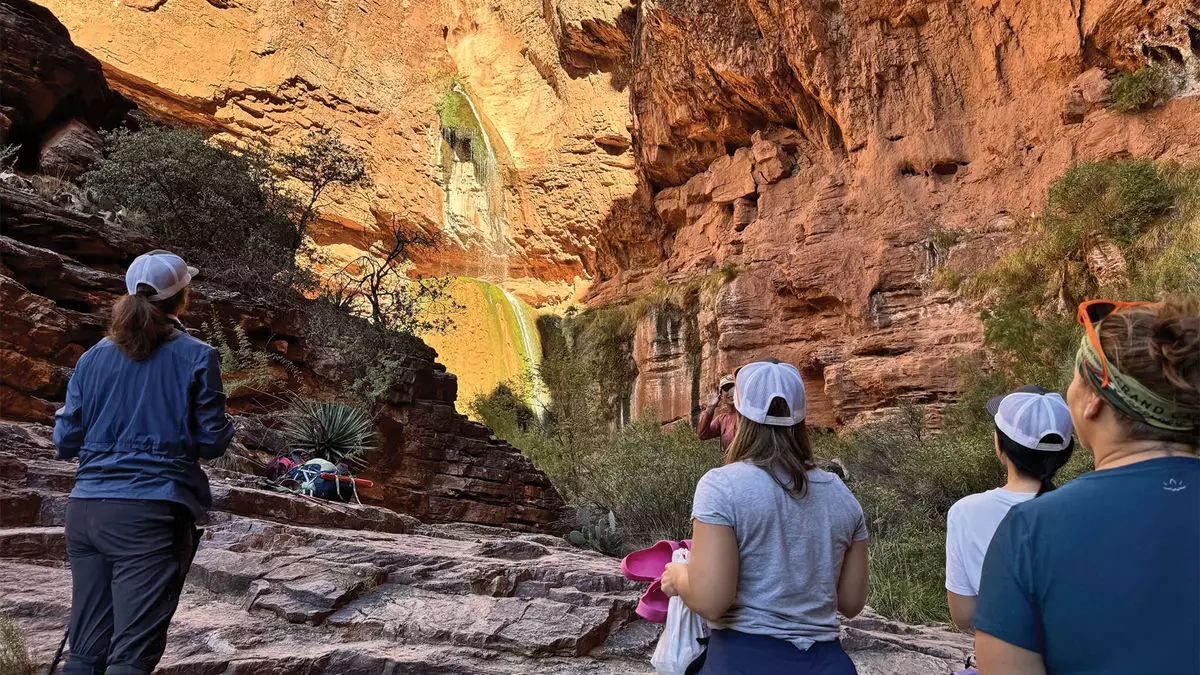In a controversial move that has stirred significant unrest among stakeholders in the tourism industry, the Trump administration’s abrupt decision to lay off 1,000 National Park Service (NPS) employees raises alarm bells as the peak summer season approaches. Tour operators are expressing fears about the implications of this decision on their operations and the quality of visitor experiences within national parks. The layoffs, enacted on February 14, were part of a broader agenda to cut federal spending—a decision that has drawn widespread condemnation from both current and former NPS staff and proponents of conservation.
The decision’s immediate fallout is already becoming evident, with reports surfacing about disrupted services in several national parks. Although some tour operators have received assurances from concession partners within the parks that visitor services would remain intact, it is clear that the repercussions of these layoffs are reverberating across the tourism sector. Civic demonstrations, such as the display of an upside-down American flag from El Capitan in Yosemite National Park, have signified the intensity of public dissent regarding these cuts.
The Challenge of Ensuring Visitor Safety and Experience
With the NPS workforce already feeling stretched thin prior to these layoffs, the reduced staff raises concerns about the enforcement of regulations and overall visitor safety. Scott Cundy, co-founder of Wildland Trekking, emphasized how the leaner operation could lead to delays in obtaining necessary permits and licenses crucial for guiding services. Given that his company alone runs 1,500 hiking and backpacking excursions annually across various national parks, any hindrances could jeopardize not only his business but also the safety and enjoyment of the visitors.
This sentiment is echoed by multiple stakeholders in the tourism industry. Catherine Prather, president of the National Tour Association, highlighted that about 80% of her organization’s members operate tours within national parks. A receptively-linked tour operator, who chose to remain anonymous, noted the already declining booking numbers, attributing this drop to uncertainties following the layoffs. The operator revealed that the potential loss could soar to $1 million, further emphasizing how interconnected the quest for employment and economic stability is with the tourism boom surrounding national parks.
The far-reaching impacts of these layoffs extend beyond tour operators; gateway communities that rely significantly on tourism face dire consequences. According to the National Park Service, park visitors contributed an estimated $26.4 billion in economic activity in 2023, a figure that supports crucial local jobs and stimulates broader economic growth. With reports of some parks already shortening hours or closing visitor centers, this poses a challenge for local businesses that depend heavily on park tourism.
Prather’s analysis is sobering, noting that such cuts in park accessibility could lead to fewer travelers opting for national parks. This uncertainty not only threatens the financial health of park-related businesses but also jeopardizes the entire ecosystem of tourism that nourishes these communities. The potential loss of revenue from canceled tours could create a cascading effect, impacting charter bus operators, park concessionaires, and countless surrounding businesses.
Experiences of Tour Operators on the Ground
Tour operators like Sunrise Tours are already hearing from anxious customers regarding the status of their trips. While no cancellations have been reported yet, there is a palpable shift in sentiment, with some clients expressing interest in non-park itineraries instead. Caleb Lawson, a key executive at Sunrise Tours, noted that their business is fundamentally built around national parks, with about 75% of their itineraries tied to these natural wonders. He articulated concerns about the reliability of services, anticipating longer entrance lines, potential closures of visitor centers, and doubts about facility maintenance.
Optimism, however, appears to be on the horizon for some operators. Companies with longstanding ties to national parks like Tauck and the Globus family of brands report more encouraging conversations with accommodation and service partners in the parks, possibly alleviating some immediate worries. Nevertheless, stakeholders remain cautious as the anticipated cuts may impact public service aspects like maintenance and staffing.
As the summer season approaches, the tourism sector’s nerves are understandably on edge. While initial communication suggests that visitor services may not face drastic changes, the potential ramifications of reduced staffing and budgetary constraints loom large. Operators are preparing for potential adjustments in their itineraries to mitigate unforeseen challenges that may arise.
Despite the current sense of uncertainty, the long-term implications of these layoffs still warrant scrutiny. As stakeholders continue gathering insights and feedback, vigilance is necessary to ensure a successful and positive visitor experience in national parks. The coming months will be critical in assessing the profound effects these layoffs will have on both tourism operators and the larger ecosystem of the national park service that millions of Americans cherish.


Leave a Reply